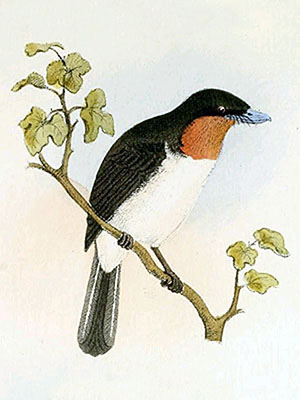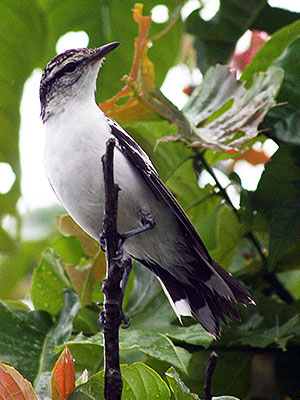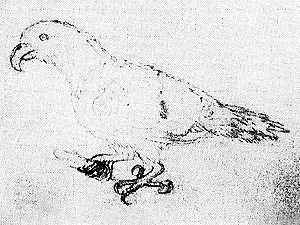Tongan Monarch (Myiagra sp.)
The Tongan Monarch is known from subfossil bones excavated on the island of ‘Eua.
The species is most closely related to the jeweled (Myiagra azureocapilla Layard) and the red-bellied monarch (Myiagra vanikorensis (Quoy & Gaimard)) of the Fiji Islands and the Samoan monarch (Myiagra albiventris(Peale)) (see illustration).
The islands of the Tongan archipelago most likely harbored several subspecies, each inhabiting neighboring island groups.
The Tongan Monarch disappeared, along with numerous other native bird species, due to the devastating destruction of natural vegetation on Tonga’s heavily populated islands.
********************

Depiction from: ‘O. Finsch; G. Hartlaub: Contribution to the fauna of Central Polynesia. Ornithology of the Viti, Samoa and Tonga Islands. Halle, H. W. Schmidt 1867’
(public domain)
********************
References:
[1] D. W. Steadman: Extinction and Biogeography of Tropical Pacific Birds. University of Chicago Press 2006
********************
edited: 04.12.2012



